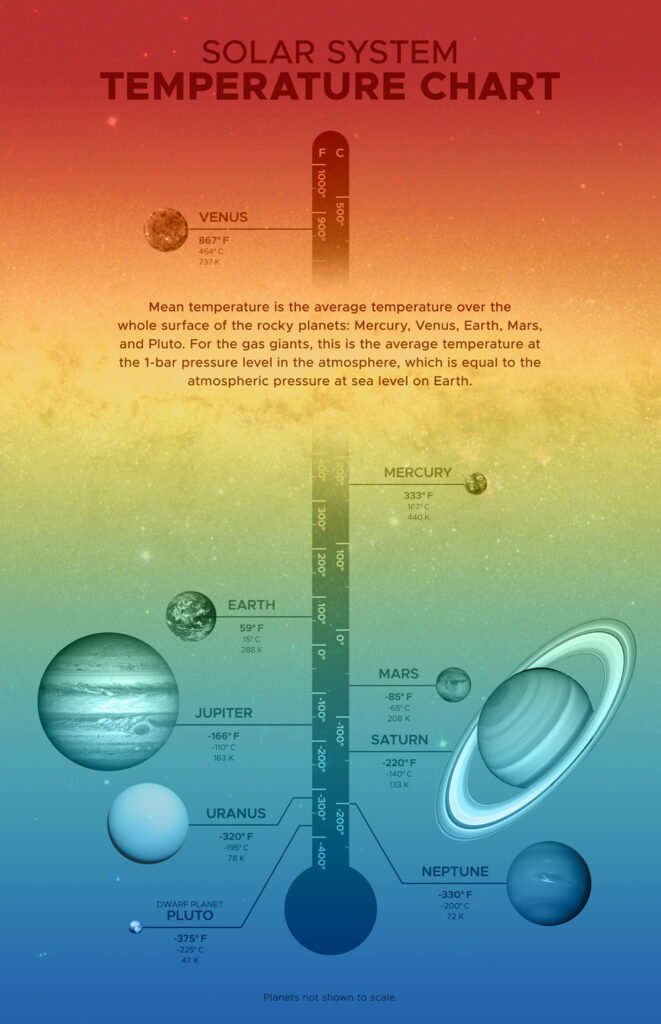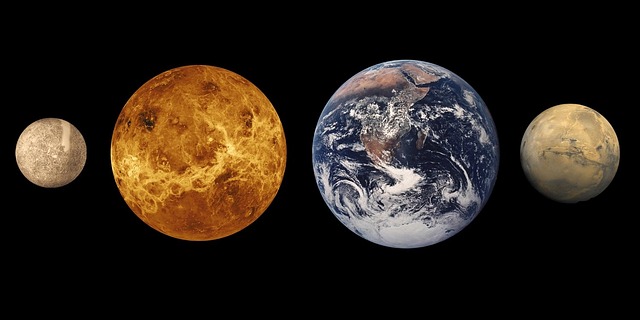According to preliminary data collected from the Climate Reanalyzer Project by the University of Maine, July 2023, was possibly the hottest month recorded. The global temperature surpassed the previous record dating back to August 2016. According to experts, this whole temperature upsurge is a sign of a worsening global crisis and an advanced effect of global warming. That being said, one gets into questioning whether other planets also face such a situation. Do these celestial bodies undergo a phenomenon similar to Earth, getting hit by global temperature changes? If yes, or if no! What are the reasons? Let’s quickly pull you through an analysis of climate change and other planets.

Climate Change And Other Planets – Deciding Factors For Temperature On Other Planets?
Let’s look at each planet’s mean temperature as per NASA reports.
- Mercury – 333°F (167°C)
- Venus – 867°F (464°C)
- Earth – 59°F (15°C)
- Mars – Minus 85°F (-65°C)
- Jupiter – Minus 166°F (-110°C)
- Saturn – Minus 220°F (-140°C)
- Uranus – Minus 320°F (-195°C)
- Neptune – Minus 330°F (-200°C)
- Dwarf Planet Pluto – Minus 375°F (-225°C)
Usually, the surface temperature of the planets decreases under the influence of their increasing distance from the Sun. That is why you have the outer planets all icy and cold while the inner planets are hot. But even though the inner planets eventually undergo a rising temperature, one cannot blame the Sun for the same. Rather than increasing the temperatures and causing the planets to suffer in extreme heat, rays from Sun contribute towards life growth.

However, the orbital location, rotating speed, and atmospheric conditions on a planet contribute to the greenhouse effect.
- The dense atmosphere on Venus heats the planet’s surface more than the melting point of lead.
- Mercury, on the other hand, rotates slowly and has a thin atmosphere. Without Sunlight, the temperature drops as low as -290°F (-179°C) at night.
- Lastly, the temperature on the gas planets – Jupiter, Saturn, Uranus, Neptune, and dwarf Pluto are stern cold, owing to their distance from the Sun.
Another eminent factor is the “greenhouse gases” monitoring climate change on other planets. This, among all the contributing ones, is the most volatile and susceptible to immediate change under the influence of particles from space.
The Greenhouse House Gases Altering Temperatures Among The Inner Planets
While the gas giants are always running at (-) minus degrees, only the inner planets receive adequate Sunlight to go through a proper global warming cycle. Among all the others, Venus, Earth, and Mars have their names on the list. In terms of temperature Venus is always on the extreme, followed by Earth and then finally Mars.

These planets came into existence at the same time, are made from the same materials, and also had a similar temperature millions of years ago. Despite such similarities, Venus is too hot, and Mars is too cold, with the Earth in the middle. And no one but the “greenhouse gases” are to be blamed. Moving on, explaining climate change and other planets, you have the following names as greenhouse gases: Carbon Dioxide, Methane, Nitrous Oxide, and Fluorinated Gases.
Earth
The atmosphere of Earth is mainly made up of Oxygen and Nitrogen with a small amount of “greenhouse gases.” But still, the amount is enough to raise the planet’s average temperature by 33 degrees Celcius. Also, on the contrary, the thickness of the Earth’s atmosphere and the level of greenhouse gases contribute to making the planet a habitable space.
Mars
Coming to Mars, the planet, over the years, has eventually lost its atmospheric density, with the present percentage being only 1% of that of the Earth. Also, there is a huge difference in atmospheric composition, with Carbon Dioxide being the only greenhouse gas in abundance on the planet. But still, the percentage is quite negligible, not enough to trap in the Sunlight coming towards the planet. So Mars undergoes the most negligible greenhouse effect among the three.
Venus
At last, Venus has a 100x dense atmosphere compared to Earth’s. Also, 96% of the atmosphere on this planet is made up of Carbon Dioxide. That is more than enough to create a humongous greenhouse effect on the planet. Approximately causing a temperature upsurge of 462 degrees Celsius.
So that is all with the analysis of climate change and other planets. While the Sun is constant, the distance and the presence of greenhouse gases contribute to the change in planetary temperature and, in return, the overall climate of a planet.



